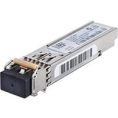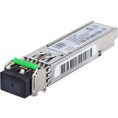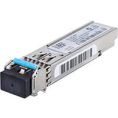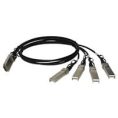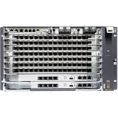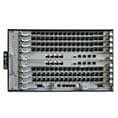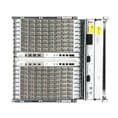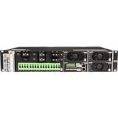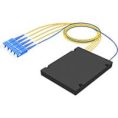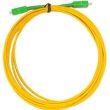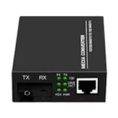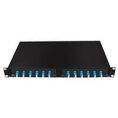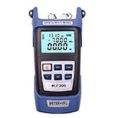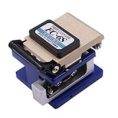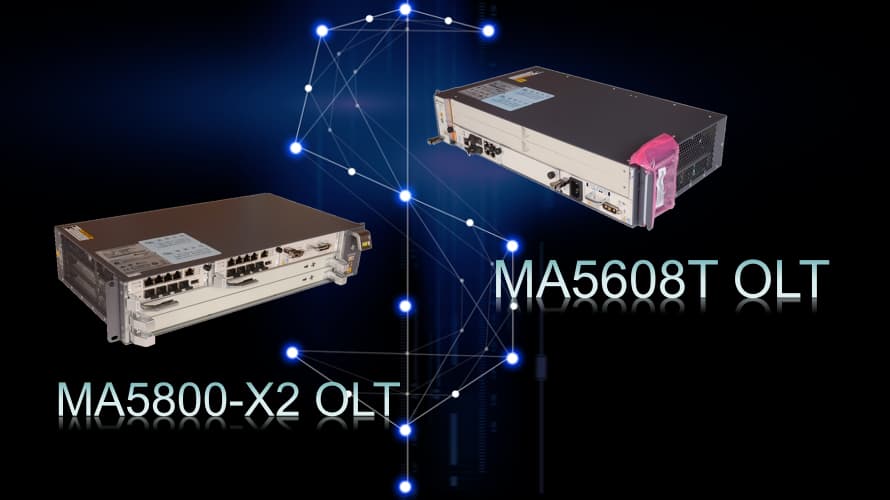The Huawei MA5800 X2 and MA5608T are both Optical Line Terminals (OLTs) used in Fiber to the Home/Building (FTTH/FTTB) networks to provide broadband access. While both serve a similar purpose, they belong to different generations of Huawei’s OLT technology and offer distinct capabilities.
Huawei MA5608T (Legacy/Earlier Generation OLT)
- Series: Part of the MA5600T series, which was Huawei’s earlier OLT generation.
- Architecture: Traditional OLT architecture.
- Service Slots: Typically has 2 service slots.
- Uplink: Uplink ports are often integrated into the main control board (e.g., MCUD). Dedicated uplink boards are not as common.
- PON Technologies: Primarily designed for GPON. Some versions might support EPON. It generally does not support XG-PON/XGS-PON/Combo PON ports.
- Capacity: Lower capacity compared to the MA5800 series in terms of MAC addresses, ONTs, and ARP tables. For example, it might support up to 32 GPON ports in a chassis and around 4096 GPON subscribers.
- Dimensions: Compact, suitable for small sites.
- Power Supply: Can support both DC and AC power supply.
Huawei MA5800 X2 (Next-Generation OLT)
- Series: Part of the MA5800 series, Huawei’s next-generation OLT, featuring a distributed architecture. It’s often referred to as an “NG-next-generation PON OLT.”
- Architecture: Features a distributed architecture, which allows for higher forwarding performance and more flexible service expansion.
- Service Slots: Also typically has 2 service slots, similar to the MA5608T in terms of slot count for this specific model (X2).
- Uplink: Offers more flexible uplink options, including dedicated 10GE uplink boards (like NXED) for higher bandwidth, in addition to uplinks integrated on control boards.
- PON Technologies: Supports a wider range of PON technologies, including:
- GPON
- XG-PON
- XGS-PON
- GPON & XG-PON combo ports
- GPON & XGS-PON combo ports
- Capacity: Significantly higher capacity than the MA5608T. For instance, it has 8 times the MAC address capacity, 2 times the access ONT capacity, and 4 times the ARP table capacity compared to the MA5608T. It can support a large number of GPON and 10G-PON ports.
- Dimensions: Similar compact dimensions to the MA5608T, making it suitable for similar deployment scenarios.
- Power Supply: Supports both DC and AC power supply.
Key Differentiating Factors Summarized:
Here’s a comparison of common board types and their characteristics for the Huawei MA5608T and MA5800 X2:
| Board Type | Huawei MA5608T (Typical Boards) | Huawei MA5800 X2 (Typical Boards) | Key Differences & Advantages of MA5800 X2 |
| Control Board | MCUD/MCUD1/MCUE: Main control board, often with integrated GE/FE uplink ports. | MPSC/MPSA/MPSG: Main control board, offering higher processing power and potentially integrated GE/10GE uplinks. Distributed architecture support. | MA5800 X2 control boards support distributed forwarding, enabling higher throughput and more flexible service processing. |
| GPON Service Board | GPFD/GPBD/GPBH: 8 or 16-port GPON interface boards. | GPHF/GPSF/GPUF/GPLF: 16-port GPON interface boards. | Both support GPON. MA5800 X2 boards often have higher port density and better performance for future-proof GPON deployments. |
| XG-PON/XGS-PON Service Board | Not Supported: The MA5608T does not have native support for XG-PON or XGS-PON. | XGHD/XSHF: Dedicated XG-PON or XGS-PON interface boards, typically 8 or 16 ports. | This is a major differentiator. The MA5800 X2’s ability to support XG-PON/XGS-PON allows for 10Gbps and symmetrical 10Gbps broadband access. |
| Combo PON Service Board | Not Supported: No integrated combo PON functionality. | TWED/CGHF/CGUF/CSHF: Boards that integrate both GPON and XG-PON or XGS-PON on the same port (e.g., a GPON ONT and an XGS-PON ONT can connect to the same port). | Enables seamless migration and co-existence of different PON technologies on the same fiber, simplifying network upgrades. |
| Uplink Board | Uplink ports typically integrated into the main control board (e.g., MCUD). Dedicated uplink boards are less common. | NXED: Enhanced 8-port 10GE uplink board. Provides higher bandwidth for upstream traffic. | MA5800 X2 offers dedicated 10GE uplink boards, allowing for significantly higher backhaul capacity to meet increasing broadband demands. |
| Power Board | MPWC/MPWD: DC or AC power input boards. | PISA/PISB: DC or AC power input boards. | Both support redundant power supplies (DC and/or AC) for high reliability. |
Summary of Differences
- PON Technology Support: The most significant difference is the MA5800 X2’s support for next-generation PON technologies like XG-PON, XGS-PON, and Combo PON, which the MA5608T lacks. This is crucial for offering higher bandwidth services (10 Gbps and beyond).
- Architecture & Performance: The MA5800 X2 features a distributed architecture, meaning forwarding is done on the service boards themselves, reducing the burden on the control board and significantly increasing overall system capacity and throughput compared to the MA5608T’s more centralized architecture.
- Uplink Capacity: The MA5800 X2 offers dedicated high-speed uplink boards (e.g., 10GE), providing superior backhaul capabilities for increased subscriber bandwidth.
- Future-Proofing: The MA5800 X2 is designed for the future, allowing service providers to upgrade to higher speeds and new services without needing to replace the entire OLT chassis.
In essence, the MA5800 X2 is a more advanced and future-proof OLT, designed to handle higher bandwidth requirements and support a wider range of Passive Optical Network (PON) technologies, making it suitable for evolving broadband access networks. The MA5608T is still a capable OLT for GPON deployments, especially in smaller or less demanding scenarios, but it lacks the scalability and next-generation PON support of the MA5800 series.

